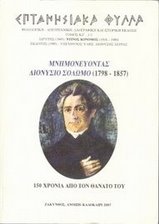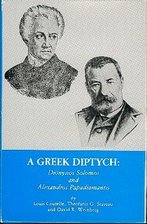by Fr. Thomas FitzGerald
When Pope Francis and Ecumenical Patriarch Bartholomew meet in Jerusalem on May 25-26, 2014, they will recall the meeting of their predecessors Pope Paul IV and Ecumenical Patriarch Athenagoras in the same city in 1964. In the midst of prayer and recollection in the Holy Places, the leaders of the Catholic Church and Orthodox Church will give thanks to God for the dramatic change in the relationship between their churches in the past fifty years. They will recall the prayer of the Lord for this disciples ‘that they all be one' (John 17:21).
Within five decades, the Catholic Church and the Orthodox Church formally have moved from isolation to engagement, from monologue to dialogue, and from misunderstanding to mutual enrichment. These developments can only have taken place with the inspiration of the Holy Spirit, and with the commitment of devoted clergy and laity to the process of reconciliation.
While the relationship between the churches may differ from place to place, these are some of the significant developments in the past fifty years:
- The Ecumenical Patriarchate has the special responsibility of guiding the Orthodox dialogue with the Catholic Church. This Orthodox dialogue with the Church of Rome has the approval of the Fourteen Autocephalous Orthodox Churches.
- The Catholic Church recognizes the preeminent leadership of the Ecumenical Patriarch among all the Orthodox.
- After centuries of alienation, both the Orthodox Church and the Catholic Church have formally committed themselves to the restoration of full communion through an agreed understanding of the Apostolic Faith. Both Churches now see themselves as ‘Sister Churches' with the responsibility of maintaining the Apostolic Faith and healing their division.
- For the Catholics, this commitment to reconciliation was expressed at the Second Vatican Council (1962-1965) and in subsequent statements. For the Orthodox, this commitment was expressed in the decisions of the Pan-Orthodox-Conferences (1961-1968) and in subsequent statements.
- Both churches recognize a state of schism exists. This schism resulted primarily from different understandings of authority in the Church and specifically the role of the Bishop of Rome. The division developed over centuries and reached a point of schism in the fifteenth century (1484). Theological differences were compounded by linguistic, political and cultural factors.
- Both churches recognize that the restoration of unity requires prayer for reconciliation, the resolution of differences in teachings and practices, and a common witness to the Gospel in the society. As the schism occurred over time, so also the process of reconciliation will take place over time.
- Orthodox and Catholic look to the day when they can heal the schism and share in the Holy Eucharist. Both Orthodox and Catholics recognize the Eucharist to be the center of church life and personal piety. However, the schism prevents the faithful in both churches from joining together in the celebration of the Eucharist.
- The Anathemas of 1054 were removed by the Church of Rome and the Church of Constantinople in 1965. The original acts of excommunication were directed against particular persons, not against the churches as a whole. Although some later historians set 1054 as the date of the schism, in fact this was only one of a number of events that weakened the bonds between the churches. Indeed, the relationships continued after this, until at least the fifteenth century.
- Popes and Ecumenical Patriarchs have met frequently since 1964. These meetings symbolize the new relationship between the churches. They also provide opportunities for the senior hierarchs to pray together and to discuss issues of church life.
- Every year, the Ecumenical Patriarchate sends a delegation to Rome to observe the feast of Sts. Peter and Paul in Rome on June 29. Likewise, the Church of Rome sends a formal delegation to Constantinople to observe the feast of St Andrew on November 30.
- Theologians from both churches meet regularly to discuss issues of division and points of agreement. The North American Consultation began in 1965. The Joint Committee of Orthodox and Catholic Bishops in the United States began in 1981.The Joint International Commission for Theological Dialogue was established in 1989.
- The issues that have divided the churches are being examined in depths. These include different understandings of primacy and conciliarity as well as different understandings of the relationship of the persons of the Holy Trinity. At the same time, the theologians of both churches have affirmed a common understanding of the Holy Trinity and the Church as well as Baptism and the Eucharist. In looking to the future, they have recognized that the early church affirmed a diversity of practices and theological emphasis provided that the unity of the faith was preserved.
- These official theological dialogues have been enriched by the recent studies by Orthodox and Catholic scholars who have examined the theological, historical, cultural and linguistic factors that contributed to the schism.
- Catholic theologians are studying the Orthodox practice of synodality, of a married priesthood and of the process of recognizing the dissolution of a marriage.
- Theological students and seminarians from each church have studied with those from the other tradition.
- Orthodox and Catholic Bishops have addressed together critical social and moral issues in the American society.
- Led by their bishops, many Orthodox and Catholic clergy and laity have participated in pilgrimages to Rome and Constantinople.
- At the local level, many Orthodox and Catholics have come together for special prayer services, retreats and conferences.
- Members of both churches recognize that they honor Mary, the Mother of God, as well as the saints and martyrs. They have come to appreciate the saints which are honored in both traditions. These saints serve as an unbroken bond between the Orthodox and Catholic churches.
- The relics of many saints have been returned by the Catholic Church to the Orthodox. In 2004, for example, the relics of St Gregory the Theologian and St. John Chrysostom were returned to Constantinople by Pope John Paul II.
- Orthodox and Catholic read the spiritual and theological writings of teachers from each other's church. They have been enriched by the studies of the Scriptures and Fathers of the Church.
- Many Catholics have deepened their appreciation of the meaning of icons, and their place in worship and teaching.
- Marriages of Orthodox and Catholic have dramatically increased. The Catholic Church recognizes marriages of an Orthodox and Catholic in good standing blessed by an Orthodox priest.
- With the blessing of their pastor, Orthodox young people are free to attend Catholic schools. And, Catholic young people are free to attend Orthodox schools. The differences in church practices are recognized. There can be no attempt to proselytize.
- Orthodox and Catholic humanitarian agencies frequently cooperate in providing aid at disasters.
- Many Catholic and Orthodox parishes join together in sponsoring food pantries and meals from the needy. In this way, they express a common commitment in the name of Christ to the well being of the society.
Speaking of the quest for unity, Ecumenical Patriarch Bartholomew says:
We know that the process of reconciliation is not always easy. The division between the Orthodox Church and the Roman Catholic Church has persisted for centuries. Yet, we firmly believe that, with the guidance of the Risen Lord, our differences are not beyond resolution. Moreover, we believe that we have a solemn obligation to our Lord to heal our painful divisions. For this reason, we must be persistent in our prayer. We must increase our expressions of love and mutual respect. We must strengthen our theological dialogue.
--------------------------------------------
Rev. Dr. Thomas FitzGerald, Protopresbyter of the Ecumenical Patriarchate, is Professor of Church History and Historical Theology, and former Dean at Holy Cross Greek Orthodox School of Theology in Boston, MA. He is the Orthodox Executive Secretary of the North American Orthodox-Catholic Bilateral Consultation in North America.

































